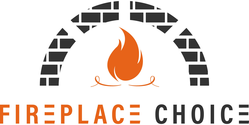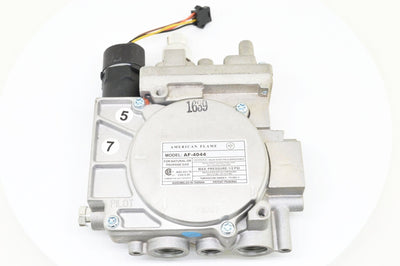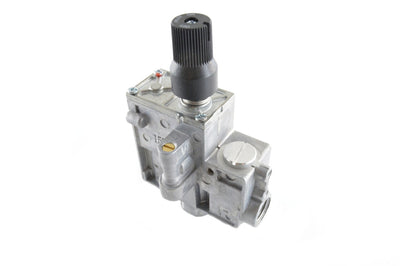How much fuel do fireplaces consume and how much do they cost to operate
How much fuel do fireplaces consume and how much do they cost to operate?
With the winter chill looming, you may be contemplating investing in a fireplace to add warmth and ambiance to your home. However, concerns about fuel consumption and operating costs tend to put many homeowners on edge.
This blog post aims to demystify those aspects by discussing the various types of fireplaces, their energy usage and possible running costs. Stick around if snug fireside evenings without breaking your budget sounds enticing!
Key Takeaways
- Gas fireplaces can burn natural gas or propane for heating. They have high efficiency ratings of up to 90% and offer different heat levels.
- Electric fireplaces use around 1,500 watts of energy on average. Costs per hour might be as low as one cent if you only use the LED display without actual heating.
- Operating costs for both types of fireplaces depend on factors like fuel type used, efficiency rating of the fireplace, how often and long it's used, and maintenance costs.
- Regular upkeep is important to keep your fireplace working well and safely. This could include checking for leaks or issues, replacing parts when needed, and cleaning tasks.
Understanding Fireplaces
This section of the blog aims to provide an in-depth understanding of fireplaces, particularly focusing on how gas fireplaces work. It will address questions such as what a Gas Fireplace is and shed light on its operational mechanisms, creating a foundational knowledge for further discussions on its fuel consumption and cost analysis.
https://www.youtube.com/watch?v=nbHHxEdsaEI
What is a Gas Fireplace?
A gas fireplace is a type of heating unit that uses natural gas or propane as its primary source of fuel. They come in various designs, including log sets, inserts, and built-ins. With just the turn of a knob, they instantly provide flames and heat to your space.
One significant advantage they hold over traditional wood-burning fireplaces is their efficiency - they convert nearly all their energy into heat rather than sending it up the chimney! These units measure their fuel consumption in British Thermal Units (BTU) or kilowatts, depending on the model.
Notably, natural gas fireplaces offer one of the most cost-effective ways to add warmth to your home due to low gas costs. However, these types of fireplaces vary greatly in terms of heat output levels- so choosing one depends largely on your specific needs and preferences.
How Does a Gas Fireplace Work?
Gas fireplaces operate with a simple and effective mechanism that enhances their usability and efficiency.
- The process starts with a homeowner turning a knob or pressing a button to ignite the fireplace.
- Natural gas, or sometimes propane, flows into the burner beneath the logs.
- The flames are created instantly – an advantage mentioned in our important facts.
- As the gas burns, it creates radiant heat which is spread throughout the room.
- Glass - fronted gas fireplaces can reach over 70% efficiency by focusing this radiant heat into the living space while minimizing heat loss.
- Some high - efficiency models can reach almost 90% efficiency by optimizing radiant heating and reducing gas consumption.
- In ventless models, almost all of the energy from burning gas is converted into usable heat due to no connection to exterior vents.
- The charm of these heating units lies not only in their fuel - consuming capabilities but also in how they make your room look and feel cozy, adding rich aesthetics besides their primary function as a heat source.
- Lastly, once you turn off the fireplace, the flow of propane or natural gas ceases immediately which means any risk for carbon monoxide poisoning is eliminated assuming your fireplace is functioning properly and has safety features.
Fuel Consumption of Fireplaces
This section gives a comprehensive look at the fuel consumption rate of fireplaces, focusing on how much gas a gas fireplace uses and understanding energy usage in electric fireplaces.
https://www.youtube.com/watch?v=XK4A-iTTRe8
How much gas does a gas fireplace use?
Gas fireplaces use fuel measured in British Thermal Units (BTUs) or kilowatts. The BTU rating of a gas fireplace can range from 10,000 to 40,000 BTUs per hour depending on the size and type of the unit.
A small 10,000 BTU gas fireplace uses less gas compared to larger models that emit up to 40,000 BTUs. Notably, natural gas and propane are the common fuels used by these fireplaces.
High-efficiency units such as glass-fronted gas fireplaces achieve over a remarkable 70% efficiency while some reach nearly an impressive 90%.
How Much Energy Does an Electric Fireplace Use?
Electric fireplaces are known for their energy efficiency. Typically, these heating units draw approximately 1,500 watts of power when in use. Since they are designed especially for zone heating, electric fireplaces can warm up a space up to 400 square feet effectively.
If you consider the average electricity costs, running a device of this capacity equates to around 18 cents per hour at full heat settings. However, adjusting heat levels to lower parameters or using just the LED-backlit fire display with no heating involved will significantly reduce your hourly operating cost—sometimes even as low as one cent! Therefore, understanding your appliance's capabilities and adjusting usage accordingly can lead to home energy savings while keeping you cozy during cold weather.
Cost Analysis of Operating Fireplaces
Understanding the costs associated with operating fireplaces is critical to making an informed decision. In this section, we'll analyze running costs by breaking down the specific expenses of both gas and electric fireplaces.
We'll evaluate how much it costs to run a gas fireplace per hour, day, and month. Additionally, we will explore the monthly cost of using an electric fireplace under similar conditions.
This comparison will give you insights into whether a gas or electric model would be more cost-effective for your home heating needs. Make sure to consider these factors when debating between different types of fireplaces for your household's warmth and comfortability during colder months.
https://www.youtube.com/watch?v=uVm3tv5d-80
Running Costs of a Gas Fireplace
A gas fireplace is a cost-effective heating solution, with the overall running cost dependent on factors like gas prices and the specifics of the model. Here is a breakdown of the operational costs:
|
Factor |
Cost |
|
Gas Consumption |
This depends on the BTU rating of the fireplace and the current gas cost, but on average it can range from $0.20 to $0.60 per hour. |
|
Efficiency |
Gas fireplaces can have an efficiency rating of up to 70-90%, with some ventless models close to 100%. A higher efficiency means less wasted fuel, and thus lower costs. |
|
Installation |
The cost of installation can vary widely based on the complexity of the installation, but generally ranges from a few hundred to a few thousand dollars. |
|
Maintenance |
Annual inspections and cleaning can incur costs, on average ranging from $100 to $200. |
Remember that these costs are estimates and can vary based on specific factors like regional gas prices, the efficiency of the fireplace, and the severity of the winter.
Electric Fireplace Monthly Cost
Electric fireplaces, which use electricity as their fuel source, can have a varied monthly cost depending on a few factors.
|
Factor |
Description |
|
Electricity Rates |
The cost of electricity per kilowatt-hour will significantly impact the operation cost of an electric fireplace. Higher rates mean higher costs. |
|
Usage |
The length of time the fireplace is used each day, along with the number of days per month it's in use, will contribute to the monthly cost. More usage equals higher costs. |
|
Size of the Unit |
The size and power of the electric fireplace will also play a role in the operating cost. Larger, more powerful units tend to consume more electricity, which can increase the monthly cost. |
|
Efficiency |
Efficiency rating of the fireplace can reduce the amount of electricity needed to operate, possibly reducing the monthly cost. Higher efficiency equates to lower operational cost. |
|
Location |
Places with lower electricity rates may find operating an electric fireplace more cost-effective. |
One advantage of electric fireplaces is that they do not require the use of natural gas, which can be more expensive. Furthermore, electric fireplaces generally do not require venting, which can further reduce potential installation costs.
Factors Influencing the Operating Cost of Fireplaces
Different aspects can influence the operating cost of a fireplace, including the type of fuel used - natural gas or electricity being popular choices. The energy efficiency rating of your fireplace is also paramount since higher ratings equate to lower operating costs.
How frequently and for how long you use your fireplace will naturally impact its running costs as well, with heavy usage leading to increased expenditures. Lastly, don't forget about maintenance costs; regular servicing might be required to keep everything working smoothly and safely, which adds up over time.
Type of fuel used
Gas fireplaces typically use either natural gas or propane as fuel. Natural gas is the more commonly used type of fuel due to its availability and cost-effectiveness. Its clean-burning nature also makes it a greener option, contributing to sustainable living.
Propane, on the other hand, is an alternative for homes that don't have access to a natural gas line. Although slightly pricier than natural gas, propane burns hotter and can heat up your fireplace quickly.
Both of these fuels contribute very differently in terms of operating costs but play vital roles in efficient heating systems.
Efficiency rating of the fireplace
The efficiency rating of a fireplace plays an essential role in its operation and cost-effectiveness. High-performing gas fireplaces with glass fronts deliver impressive efficiency ratings, often above 70%.
For even better performance, some models climb to nearly 90% efficiency. This means these heating units convert the majority of their fuel into usable heat. The stars in terms of energy conversion are ventless gas fireplaces - they reach almost 100% efficiency.
By harnessing nearly all available energy for heat production, these systems increase warmth while keeping operating costs low and reducing carbon footprint. This is an important factor considering sustainable living practices and strategies for reducing home energy consumption.
Duration of usage
The usage duration of a fireplace significantly affects its operating cost. Frequent and prolonged use results in more fuel consumption, leading to higher costs. For instance, running a gas fireplace nonstop is like leaving your oven on all day; it consumes an enormous amount of energy and sends your utility bills soaring.
On the other hand, electric fireplaces have adjustable settings that allow you to control heat output according to temperature needs, which can reduce energy use. So, strategically managing the usage time of fireplaces could help keep operating costs at bay.
Maintenance costs
Enduring the cold can become a daunting task without regular fireplace upkeep. Maintenance costs relate directly to the type of fireplace, extent of maintenance required, and professional service fees.
Gas fireplaces offer an advantage with minimal maintenance needs; they produce no ashes which cuts down on cleaning time and reduces fuel replacement costs. Ensuring routine tasks—like checking for gas leaks or electrical issues, replacing parts as needed and regular clean-ups—keeps your fireplace running efficiently and safely.
Daily usage patterns, energy efficiency ratings, and fluctuating gas prices also contribute to these expenses.
Comparing Gas and Electric Fireplaces
Explore our comparison between gas and electric fireplaces, where we break down the differences in conversion costs and answer the question: "Is it cheaper to run an electric fireplace or heat?" Interested? Read on to get your answers!
Fireplace to Gas Furnace Conversion Cost
The cost of converting a fireplace to a gas furnace largely depends on the complexity of the installation and the type of gas furnace chosen. However, even though there will be an initial installation cost, converting to a gas furnace can be highly cost-effective in the long run as the price of natural gas is typically lower than the cost of electricity.
|
Steps |
Cost |
|
1. Removing the existing fireplace |
$500-$2,000 |
|
2. Installation of a gas line |
$500-$2,000 |
|
3. Purchase of a gas furnace |
$2,500-$7,500 |
|
4. Installation of the gas furnace |
$1,000-$3,000 |
|
5. Inspection and certification |
$200-$500 |
|
Total cost |
$4,700-$15,000 |
Please note that these costs are estimated averages and can vary based on local labor rates, the size and complexity of the project, and the specific model of gas furnace selected. Despite these initial costs, the lower operating cost of a gas furnace can lead to significant savings over time.
Is it Cheaper to Run an Electric Fireplace or Heat?
While some might think electric fireplaces are more cost-effective because they don't require the purchase of fuel, it's important to consider the energy usage and operational costs. Here's a comparison:
|
Factors |
Electric Fireplace |
Gas Fireplace |
|
Cost per hour |
Runs on electricity, cost varies depending on local electricity rates, ranging between 7-13 cents per hour. |
Depends on gas prices, typically between 10-20 cents per hour. |
|
Heat output |
Produces less heat compared to a gas fireplace, usually about 5000 BTUs. |
Produces more heat, with an average of 20,000 BTUs. |
|
Efficiency |
All the electricity used goes directly into heating, so efficient but produces less heat. |
Gas fireplaces, especially ventless types, can reach almost 100% efficiency, converting almost all the gas into heat. |
|
Installation Costs |
Generally cheaper to install as they don't require venting or a gas line. |
Higher installation costs due to the need for a gas line and venting. |
In conclusion, a gas fireplace may be more cost-effective to run because of its higher heat output and efficiency, despite its higher installation cost. However, the exact costs will depend on your local gas and electricity prices.
FAQs
Many readers often ask how to calculate the operating cost of their gas fireplace. It's not as complicated as it may seem. First, find the BTU rating of your fireplace and divide it by 100,000.
Next, multiply this figure by the current price per therm of natural gas from your utility company.
Others question why their gas fireplace seems more costly to run than their furnace even when both use natural gas. This disparity is typically due to efficiency differences and heat output capacities between these two heating devices.
While furnaces are designed for whole-house heating with high efficiency rates, a single-room heat source like a gas fireplace tends to have lower efficiency and less heat output capacity.
A common concern is about ventless models' effectiveness - since they don't connect to an exterior venting system, do they offer enough heating? Surprisingly yes! Ventless fireplaces almost achieve 100% energy-to-heat conversion making them very effective.
Another frequent inquiry relates to safety concerns associated with glass-fronted fireplaces. Rest assured that these models have excellent efficiency ratings – some can reach nearly 90% – reducing potential hazards related to excessive fuel consumption and carbon monoxide emissions.
Lastly, many users wonder if investing in high-efficiency fireplaces will save costs in the long run despite higher initial purchase prices. Given their impressive energy performance statistics - some reaching up around 70%-90% efficiency rates - they indeed present significant savings opportunities over time.
Conclusion
The operation and fuel consumption costs of fireplaces largely depend on their type, efficiency, and usage. Gas fireplaces, though efficient in heat output and ambiance provision, can be costlier compared to gas furnaces.
However, the warmth and coziness a fireplace brings into a home make it an appealing choice for many homeowners despite the operational expenses involved. Always consider factors such as energy efficiency ratings, fuel type used, potential maintenance costs alongside total running costs when deciding on your residential heating option.
FAQs
1. What is the cost to run a gas fireplace?
The cost to run a gas fireplace depends on the price of propane per gallon or the cost of natural gas per therm, and how many therms or cubic feet of natural gas your specific model uses.
2. Can I get instant heat from my centralized heating system using a thermostat temperature setting?
Yes, with appropriate thermostat temperature settings in place, fireplaces can provide instant heat similar to what you'd expect from an efficient centralized heating system.
3. How does Heating Efficiency affect fuel consumption for indoor and outdoor fireplaces?
A high AFUE rating means that more of the fuel is converted into heat which increases efficiency and reduces costs even when operating big 40,000 BTU gas fireplaces.
4. Are Vent-free Fireplaces safe?
Vent-free Gas Fireplaces are safe if installed correctly with necessary safety features like smoke detectors and maintained properly including chimney cleaning while ensuring good air quality for indoor use.
5. Do Wall-mounted Electric Fireplaces consume less power than Wood Burners?
An electric furnace consumes power measured in kilowatt-hours (kWh) whereas wood burners use firewood as fuel; their energy usage depends on factors such as heating output, room size, and decor styles.
6. Is it cheaper to install a vented or vent-free gas fireplace?
Installation costs will vary; however, considering long-term operational costs including running costs and maintenance like HVAC upkeep tips could help you choose between vented vs vent-free options in achieving net-zero carbon future goals.
← Older Post Newer Post →




























